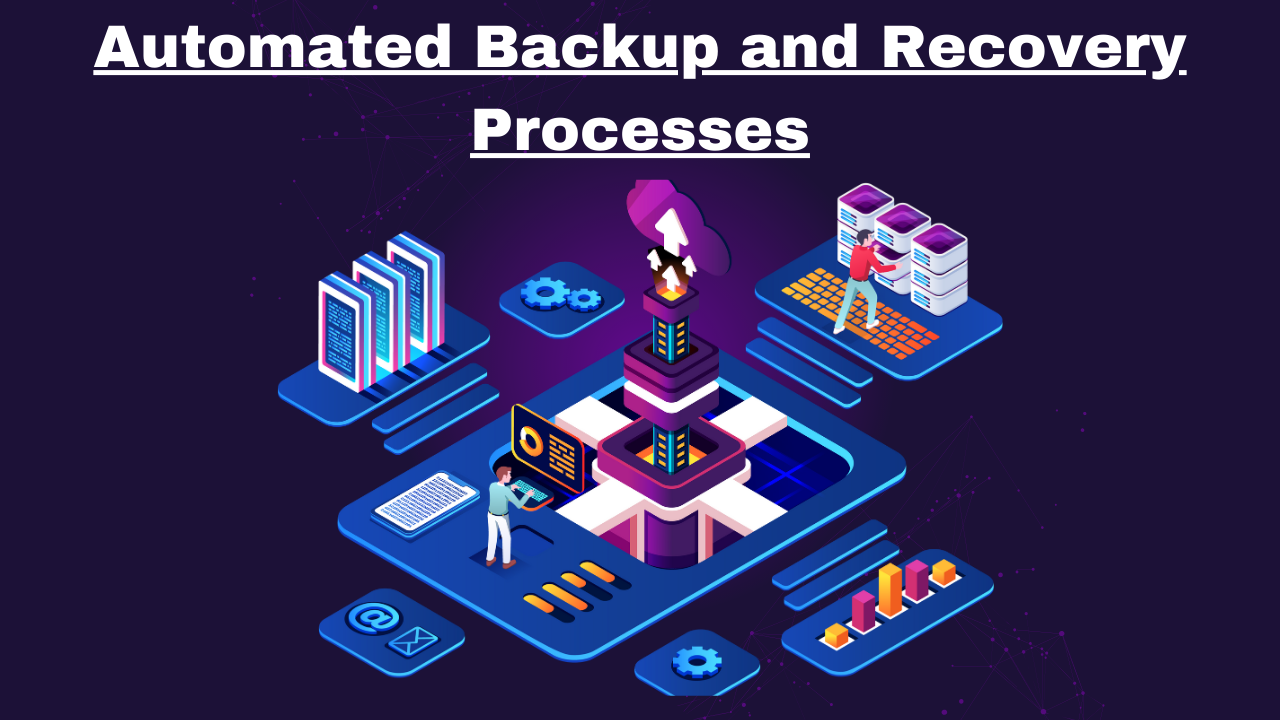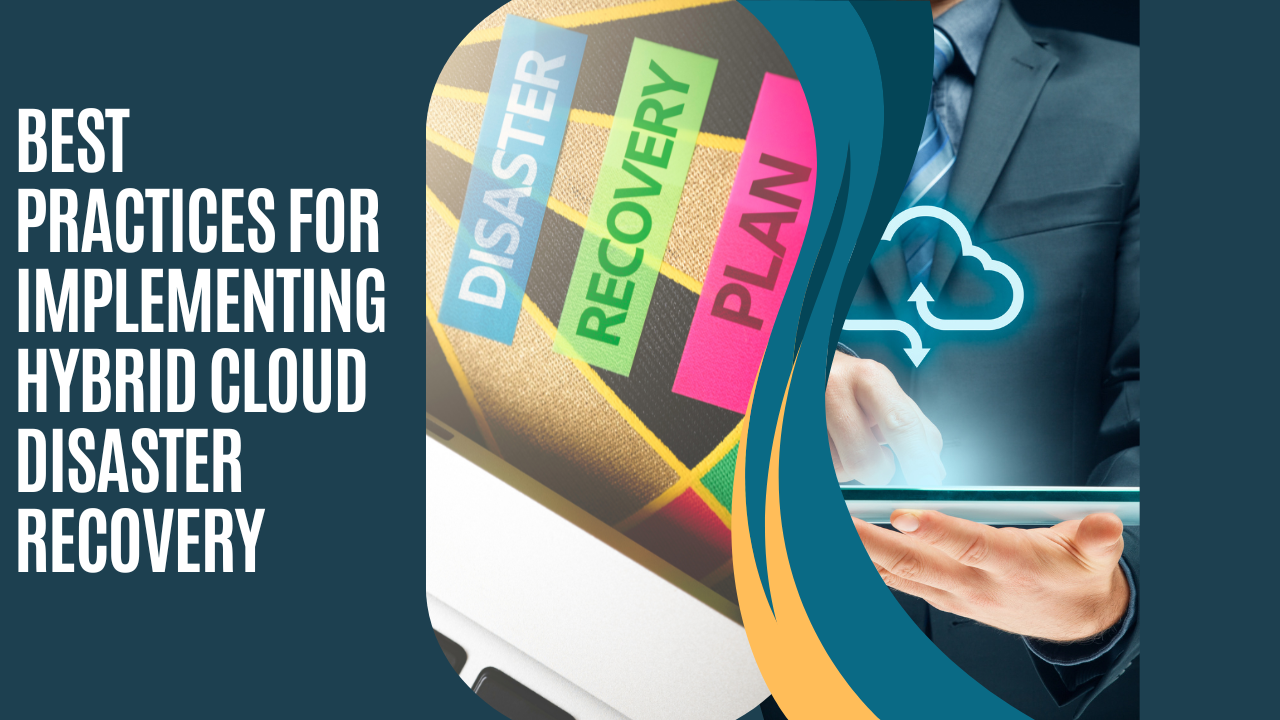In today’s fast-paced digital environment, businesses must prioritize their disaster recovery (DR) strategies to ensure continuity and resilience in the face of unexpected disruptions. While effective to some extent, traditional disaster recovery methods often fall short in flexibility, scalability, and cost-effectiveness. Enter hybrid cloud solutions—an approach that combines the best of both on-premises infrastructure and cloud resources, offering a robust framework for enhancing disaster recovery planning. This article delves into how hybrid cloud solutions bolster disaster recovery strategies, their key components, and best practices for implementation.
Understanding Disaster Recovery
Disaster recovery refers to the processes and procedures organizations implement to protect their IT infrastructure and data from disruptions caused by natural disasters, cyberattacks, hardware failures, or human error. A comprehensive disaster recovery plan (DRP) outlines how to restore operations and minimize downtime quickly. Key elements of an effective DRP include:
Data Backup: Regularly scheduled backups of critical data and applications.
Failover Mechanisms: Systems that automatically switch to a standby mode in case of failure.
Testing and Updates: Regularly test the DR plan to ensure its effectiveness and update it based on evolving business needs.
The Rise of Hybrid Cloud Solutions
Hybrid cloud solutions integrate on-premises infrastructure with public and private cloud services. This model provides organizations with greater flexibility, allowing them to choose where to store their data and applications based on specific needs, regulatory requirements, and cost considerations.
Key Characteristics of Hybrid Cloud
- Flexibility: Organizations can leverage both public and private clouds, allocating resources dynamically as needed.
- Scalability: Easily scale resources up or down based on demand without significant capital expenditure.
- Cost-Effectiveness: Pay-as-you-go pricing models reduce costs associated with overprovisioning and underutilization.
- Data Sovereignty: Businesses can choose where to store data to comply with local regulations.
How Hybrid Cloud Enhances Disaster Recovery Planning
Improved Data Redundancy
One of the primary advantages of hybrid cloud solutions is enhanced data redundancy. By utilizing both on-premises and cloud resources, organizations can ensure that critical data is backed up in multiple locations.
Example:
A company can store its primary data on a local server while maintaining a real-time backup in the cloud. In the event of a local outage or data loss, the organization can quickly switch to the cloud backup, minimizing downtime and data loss.
Automated Backup and Recovery Processes
Hybrid cloud solutions facilitate automation in backup and recovery processes. Many cloud providers offer tools that automate data backups, enabling organizations to schedule regular backups without manual intervention.
Example:
Using cloud-based backup solutions, businesses can set up incremental backups that only capture changes made since the last backup. This approach not only saves storage space but also accelerates recovery times.
Rapid Failover Capabilities
In a hybrid cloud environment, organizations can implement automated failover mechanisms that swiftly redirect operations to the cloud in the event of an outage. This rapid response is critical for minimizing downtime.
Example:
If an organization’s primary data center experiences a failure, its applications can automatically redirect traffic to a cloud-based instance. This seamless transition allows employees to continue working without significant interruption.
Cost Efficiency in Recovery
Disaster recovery can be costly, especially when relying solely on traditional methods. Hybrid cloud solutions enable businesses to optimize costs by leveraging the cloud for DR purposes rather than maintaining duplicate physical infrastructure.
Example:
Instead of investing in a secondary data center, a business can utilize a cloud provider’s resources for disaster recovery. This model reduces capital expenditures and allows organizations to pay only for the resources they use during a disaster recovery event.
Geographic Redundancy
Hybrid cloud solutions allow organizations to establish geographic redundancy by utilizing cloud resources spread across multiple regions. This setup is particularly beneficial in the event of localized disasters.
Example:
A business with a data center in one geographic location can replicate its data to a cloud provider’s data center in a different region. If a natural disaster strikes one area, the organization can quickly failover to the backup in another location.
Enhanced Testing Capabilities
Regular testing of disaster recovery plans is crucial to ensure their effectiveness. Hybrid cloud environments allow for more straightforward testing without disrupting ongoing operations.
Example:
Organizations can spin up a temporary instance in the cloud to conduct DR testing without impacting their primary production environment. This allows for thorough testing of recovery processes and identification of potential weaknesses.
Integration with Existing Infrastructure
Hybrid cloud solutions can integrate seamlessly with existing on-premises infrastructure. This compatibility ensures that organizations can leverage their current investments while transitioning to a more resilient disaster recovery model.
Example:
An organization can connect its local servers to cloud storage, allowing for hybrid backup solutions that protect data without requiring a complete overhaul of its existing infrastructure.
Compliance and Data Governance
For many organizations, compliance with industry regulations is a top priority. Hybrid cloud solutions enable businesses to store sensitive data on-premises while leveraging the cloud for less sensitive workloads, ensuring compliance with data governance policies.
Example:
A healthcare organization can maintain patient records on its local servers to comply with HIPAA regulations while using the cloud for applications that process less sensitive information.
Best Practices for Implementing Hybrid Cloud Disaster Recovery
To maximize the benefits of hybrid cloud solutions in disaster recovery planning, organizations should consider the following best practices:
Conduct a Business Impact Analysis (BIA)
Before implementing a hybrid cloud DR strategy, conduct a thorough business impact analysis to identify critical applications, data, and processes. Understanding the potential impact of disruptions will guide resource allocation and recovery priorities.
Define Recovery Objectives
Establish clear recovery time objectives (RTO) and recovery point objectives (RPO) for each critical application. These metrics will help determine the appropriate hybrid cloud solutions and configurations needed to meet business continuity goals.
Choose the Right Cloud Provider
Select a reputable cloud provider that offers robust security, compliance, and performance features. Evaluate providers based on their SLAs, geographic presence, and support options.
Implement Security Measures
Ensure that security measures are in place for both on-premises and cloud environments. This includes encryption, access controls, and regular security assessments to protect sensitive data during backup and recovery processes.
Regularly Test and Update the DR Plan
Testing the disaster recovery plan should be an ongoing process. Regularly conduct simulations and update the plan based on findings, changes in business operations, and advancements in technology.
Train Employees
Ensure that employees understand their roles and responsibilities in the disaster recovery process. Regular training sessions can help prepare staff to respond effectively during an actual disaster.
Monitor and Optimize
Continuously monitor the hybrid cloud environment for performance and cost-effectiveness. Use analytics to identify areas for optimization and make adjustments as necessary.
Conclusion
In an era where digital transformation is paramount, the resilience of an organization hinges on its ability to effectively manage disruptions. Hybrid cloud solutions offer a powerful framework for enhancing disaster recovery planning, providing businesses with the flexibility, scalability, and cost-effectiveness needed to navigate the complexities of modern IT environments. By leveraging the advantages of a hybrid cloud, organizations can ensure robust data protection, minimize downtime, and maintain business continuity in the face of unexpected challenges. Implementing best practices and regularly updating DR strategies will further enhance the effectiveness of hybrid cloud solutions, ultimately contributing to the long-term success and resilience of the organization.
FAQs
What is a hybrid cloud solution?
A hybrid cloud solution combines on-premises infrastructure with public and private cloud services, allowing organizations to use both environments for data storage and application management. This flexibility enables businesses to optimize resources and enhance their disaster recovery capabilities.
How does a hybrid cloud improve disaster recovery?
A hybrid cloud improves disaster recovery by providing improved data redundancy, automated backup processes, rapid failover capabilities, and cost efficiency. It allows organizations to back up critical data in multiple locations, quickly redirect operations in case of failure, and reduce costs by leveraging cloud resources instead of maintaining duplicate physical infrastructure.
What are the key components of a disaster recovery plan using a hybrid cloud?
Key components include data backup strategies, failover mechanisms, recovery time objectives (RTO), recovery point objectives (RPO), regular testing of the DR plan, and integration with existing on-premises infrastructure. Additionally, security measures and compliance with regulations are essential aspects of an effective DR plan.
How can organizations ensure data security in a hybrid cloud disaster recovery setup?
Organizations can ensure data security by implementing encryption, access controls, and regular security assessments for both on-premises and cloud environments. It’s also important to choose a reputable cloud provider with robust security features and compliance certifications.
How often should a disaster recovery plan be tested and updated?
A disaster recovery plan should be tested at least annually, but more frequent testing is advisable, especially after significant changes in infrastructure, processes, or personnel. Regular updates based on test results and evolving business needs help ensure the DR plan remains effective and relevant.

